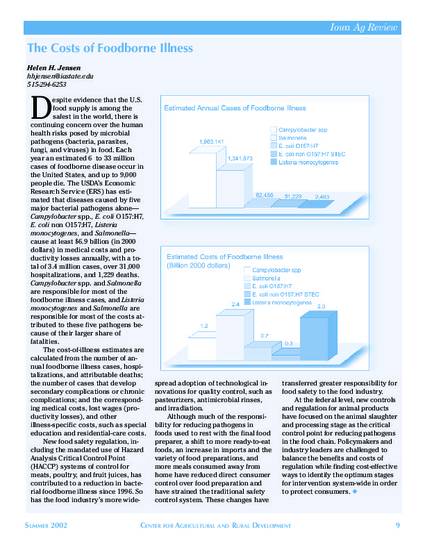
Article
The Costs of Foodborne Illness
Iowa Ag Review
Disciplines
Abstract
Despite evidence that the U.S. food supply is among the safest in the world, there is continuing concern over the human health risks posed by microbial pathogens (bacteria, parasites, fungi, and viruses) in food. Each year an estimated 6 to 33 million cases of foodborne disease occur in the United States, and up to 9,000 people die. The USDA’s Economic Research Service (ERS) has estimated that diseases caused by five major bacterial pathogens alone— Campylobacter spp., E. coli O157:H7, E. coli non O157:H7, Listeria monocytogenes, and Salmonella— cause at least $6.9 billion (in 2000 dollars) in medical costs and productivity losses annually, with a total of 3.4 million cases, over 31,000 hospitalizations, and 1,229 deaths. Campylobacter spp. and Salmonella are responsible for most of the foodborne illness cases, and Listeria monocytogenes and Salmonella are responsible for most of the costs attributed to these five pathogens because of their larger share of fatalities.
Citation Information
Helen H Jensen. "The Costs of Foodborne Illness" Available at: http://works.bepress.com/helen-jensen/93/
